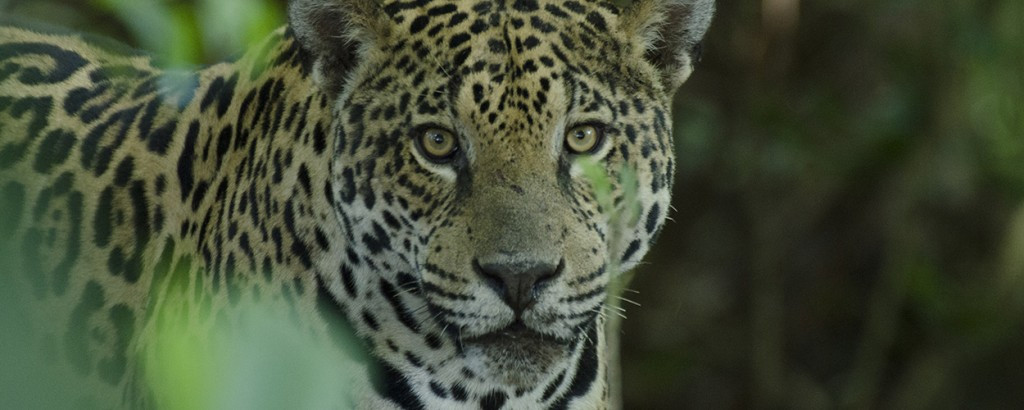
The Jaguar Genome Project is a multi-national effort led by the Carnivore Genetics Research Group at PUCRS, Brazil. It aims to characterize the genome of the jaguar (Panthera onca) using a diverse array of approaches, and to employ the resulting genomic resources to perform comparative analyses with other mammals, as well as in-depth population-level studies. As the latter analyses advance, the project aims to continuously provide useful information to improve ongoing conservation and management strategies on behalf of endangered jaguar populations.
The project was initiated in 2011 as a partnership of Brazilian institutions, and was soon afterwards endorsed by the Genome10K consortium. It subsequently grew to include partner institutions from several other countries, which have taken part in several aspects of sample collection, data generation and analyses.
This page will provide an updated list of publications deriving from the Jaguar Genome Project, as they become available.
The first paper describing the jaguar genome, along with evolutionary analyses comparing it to the other four species of the Panthera genus, was published in 2017:
Figueiró HV et al. 2017. Genome-wide signatures of complex introgression and adaptive evolution in the big cats.
Science Advances 19 Jul 2017: Vol. 3, no. 7, e1700299
DOI: 10.1126/sciadv.1700299
http://advances.sciencemag.org/content/3/7/e1700299
In addition, we provide below a list of other publications by members of the Jaguar Genome Project, focusing on genetic, evolutionary and conservation aspects of Panthera onca:
1. Lorenzana G. et al. 2020. Large-scale assessment of genetic diversity and population connectivity of Amazonian jaguars (Panthera onca) provides a baseline for their conservation and monitoring in fragmented landscapes. Biological Conservation 242: 108417. https://doi.org/10.1016/j.biocon.2020.108417
2. Srbek-Araujo AC et al. 2018. Worrisome isolation: noninvasive genetic analyses shed light on the critical status of a remnant jaguar population. J. Mammalogy 99: 397-407. https://doi.org/10.1093/jmammal/gyy007
3. Paviolo A et al. 2016. A biodiversity hotspot losing its top predator: The challenge of jaguar conservation in the Atlantic Forest of South America. Scientific Reports 6: 37147. https://doi.org/10.1038/srep37147
4. Valdez FP et al. 2015. Population genetics of jaguars (Panthera onca) in the Brazilian Pantanal: molecular evidence for demographic connectivity on a regional scale. Journal of Heredity 106 (Special Issue): 503-511. https://doi.org/10.1093/jhered/esv046
5. Galetti M et al. 2013. Atlantic rainforest’s jaguars in decline. Science 342: 930.
6. Haag T et al. 2010. Molecular tracking of jaguar melanism using faecal DNA. Conservation Genetics 11: 1239-1242. https://doi.org/10.1007/s10592-009-9933-x
7. Haag T et al. 2010. The effect of habitat fragmentation on the genetic structure of a top predator: loss of diversity and high differentiation among remnant populations of Atlantic Forest jaguars (Panthera onca). Molecular Ecology 19: 4906-4921. https://doi.org/10.1111/j.1365-294X.2010.04856.x
8. Haag T et al. 2009. Development and testing of an optimized method for DNA-based identification of jaguar (Panthera onca) and puma (Puma concolor) faecal samples for use in ecological and genetic studies. Genetica (The Hague) 136, 505-512. https://doi.org/10.1007/s10709-008-9347-6
9. Eizirik E et al. 2008. Jaguar conservation genetics. Cat News Special Issue 4 – The jaguar in Brazil: 31-34.
10. Soares TN et al. 2006. Paternity Testing and Behavioral Ecology: a case study of jaguars (Panthera onca) in Emas National Park, central Brazil. Genetics and Molecular Biology 29: 735-740.
11. Eizirik E et al. 2003. Molecular genetics and evolution of melanism in the cat family. Current Biology 13: 448-453. https://doi.org/10.1016/s0960-9822(03)00128-3
12. Eizirik E et al. 2002. Analisis de la viabilidad de poblaciones de jaguar: evaluacion de parametros y estudios de caso en tres poblaciones remanentes del sur de Sudamerica. In El jaguar en el nuevo milenio: una evaluación de su condición actual, historia natural y prioridades para su conservación (Medellín, R.A.; Chetkiewicz, C.; Rabinowitz, A.; Redford, K.H.; Robinson, J.G.; Sanderson, E.; Taber, A., eds.). Mexico, D.F.: Prensa de la Universidad Nacional Autônoma de México / Wildlife Conservation Society.
13. Johnson WE et al. 2002. Evolucion y genetica de poblaciones del jaguar: implicaciones para los esfuerzos futuros de conservacion. In El jaguar en el nuevo milenio: una evaluación de su condición actual, historia natural y prioridades para su conservación (Medellín, R.A.; Chetkiewicz, C.; Rabinowitz, A.; Redford, K.H.; Robinson, J.G.; Sanderson, E.; Taber, A., eds.). Mexico, D.F.: Prensa de la Universidad Nacional Autonoma de Mexico / Wildlife Conservation Society.
14. Kim J et al. 2001. 2001. Structure and patterns of sequence variation in the mitochondrial DNA control region of the great cats. Mitochondrion 14: 279-292. https://doi.org/10.1016/s1567-7249(01)00027-7
15. Eizirik E et al. 2001. Phylogeography, population history and conservation genetics of jaguars (Panthera onca, Mammalia, Felidae). Molecular Ecology 10: 65-79. https://doi.org/10.1046/j.1365-294x.2001.01144.x
This page contains links to some institutions that are members or partners of the Jaguar Genome Project.